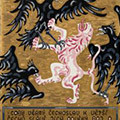The anatomy of diving into the void. The year of 1968 and art in Czechoslovakia
West Bohemian Gallery in Plzeň - Exhibition Hall Masné krámy, Pražská 18, Plzeň
June 20, 2018 - September 16, 2018
|
The anatomy of diving into the void. The year of 1968 and art in CzechoslovakiaWest Bohemian Gallery in Plzeň - Exhibition Hall Masné krámy, Pražská 18, PlzeňJune 20, 2018 - September 16, 2018
http://www.zpc-galerie.cz/en/year-1968-and-art-czechoslovakia-1266 Curator: Marcela Štýbrová This exhibition focuses on the period from 1966 to 1973, when it was evident that domestic art was becoming more emancipated and confidently involved in international structures on the art scene. It reacts to or foresees every important theme and approach – new geometry, new figuration, conceptual art, and art of action. Society as a whole was also more relaxed, and the media of the time shows a very different climate to that which bound society at the beginning of the 1960s. This largely intensified once Alexander Dubček had become General Secretary of the Communist Party – and the path opened towards the process known as the Prague Spring. This exhibition focuses on the period from 1966 to 1973, when it was evident that domestic art was becoming more emancipated and confidently involved in international structures on the art scene. It reacts to or foresees every important theme and approach – new geometry, new figuration, conceptual art, and art of action. Society as a whole was also more relaxed, and the media of the time shows a very different climate to that which bound society at the beginning of the 1960s. This largely intensified once Alexander Dubček had become General Secretary of the Communist Party – and the path opened towards the process known as the Prague Spring. The 21st August 1968. Few could imagine that twenty years after the war, during a time of peace and “normal” life, with no warning and no legal validation, foreign “friendly” forces could enter the territory of a sovereign state. We know the progress of the invasion from historical photographs and a number of mainly amateur films. Many artworks were created as a direct response to the occupation, although more arose throughout the second half of 1968 and 1969, reacting to the absurdity of the occupation and the shock and disillusion, even in abstract or symbolic form. This is why such a diverse body of work is presented, connected by the year of its creation and a feeling of paused time, a frozen moment. The form is extremely contemporary, including the essence of the 1960s, but the content changes from minute to minute. Hands by Eva Kmentová or Jozef Jankovič, Abandoned Pedestal or Silent Landscape by Jiří Kolář, Portrait of Franz Kafka by Václav Hejna; these are all very personal and intense reflections on the incomprehensibility and unacceptability of the event. The exhibition closes with artworks created on the cusp of normalization – one group displaying sadness and disillusion, while the other is a foundation for the art of the 1970s – alluding to the emigration wave and the concepts and performances taking place away from official life. Works by following artists will be presented at the exhibition: Jiří Kolář, Jitka Válová and Květa Válová, Rudolf Volráb, Václav Boštík, Věra Janoušková, Jiří Načeradský, Eduard Ovčáček, Jan Zrzavý, František Janoušek, Alena Koenigsmarková, Stanislav Bukovský, Stanislav Kolíbal, Eva Kmentová, Ivan Steiger, Vladimír Jiránek and others; documentary films and photographs. The exhibition is complemented by a number of accompanying programs – historical films, music, meetings with witnesses, etc. West Bohemian Gallery in Plzeň - Exhibition Hall Masné krámy |


